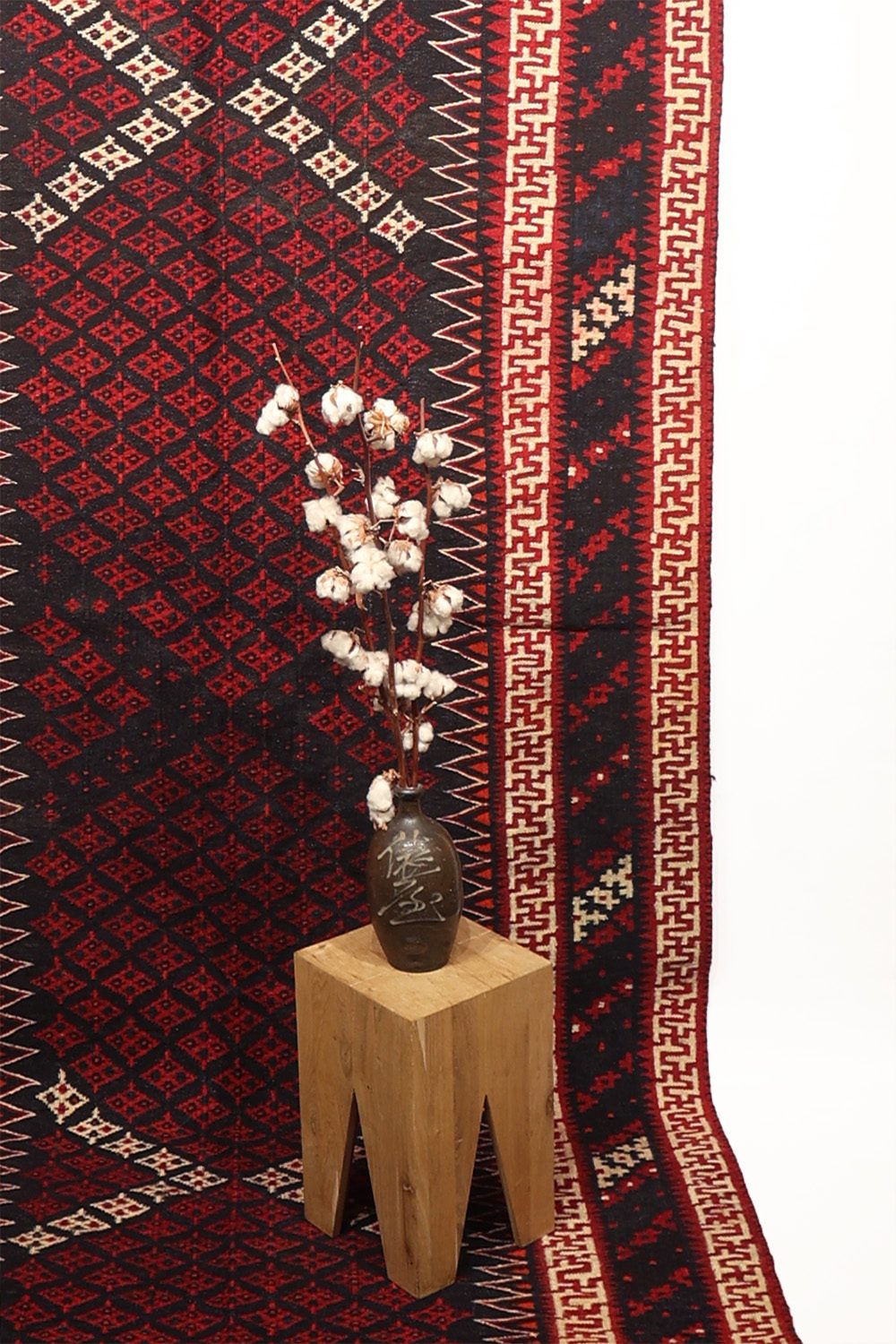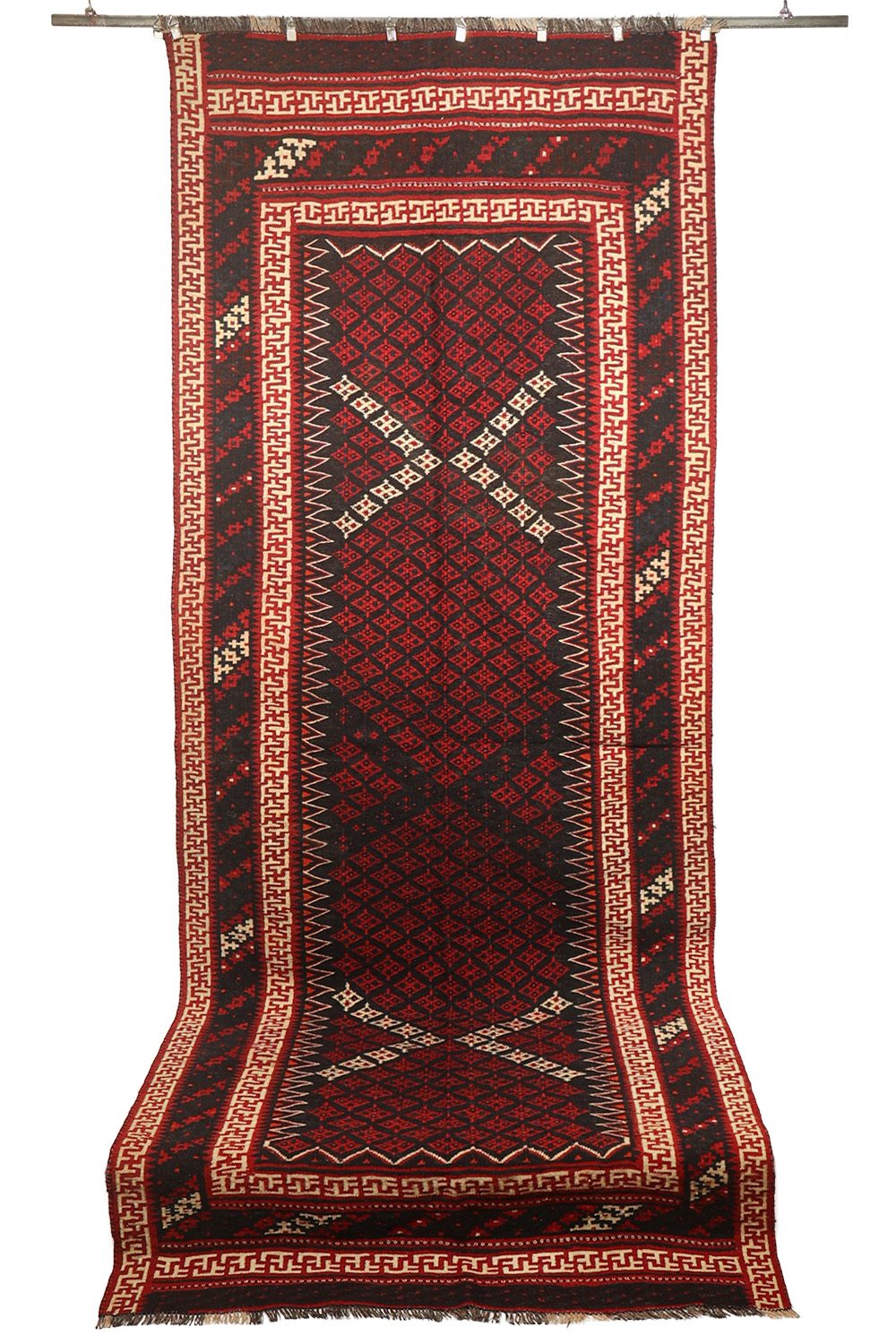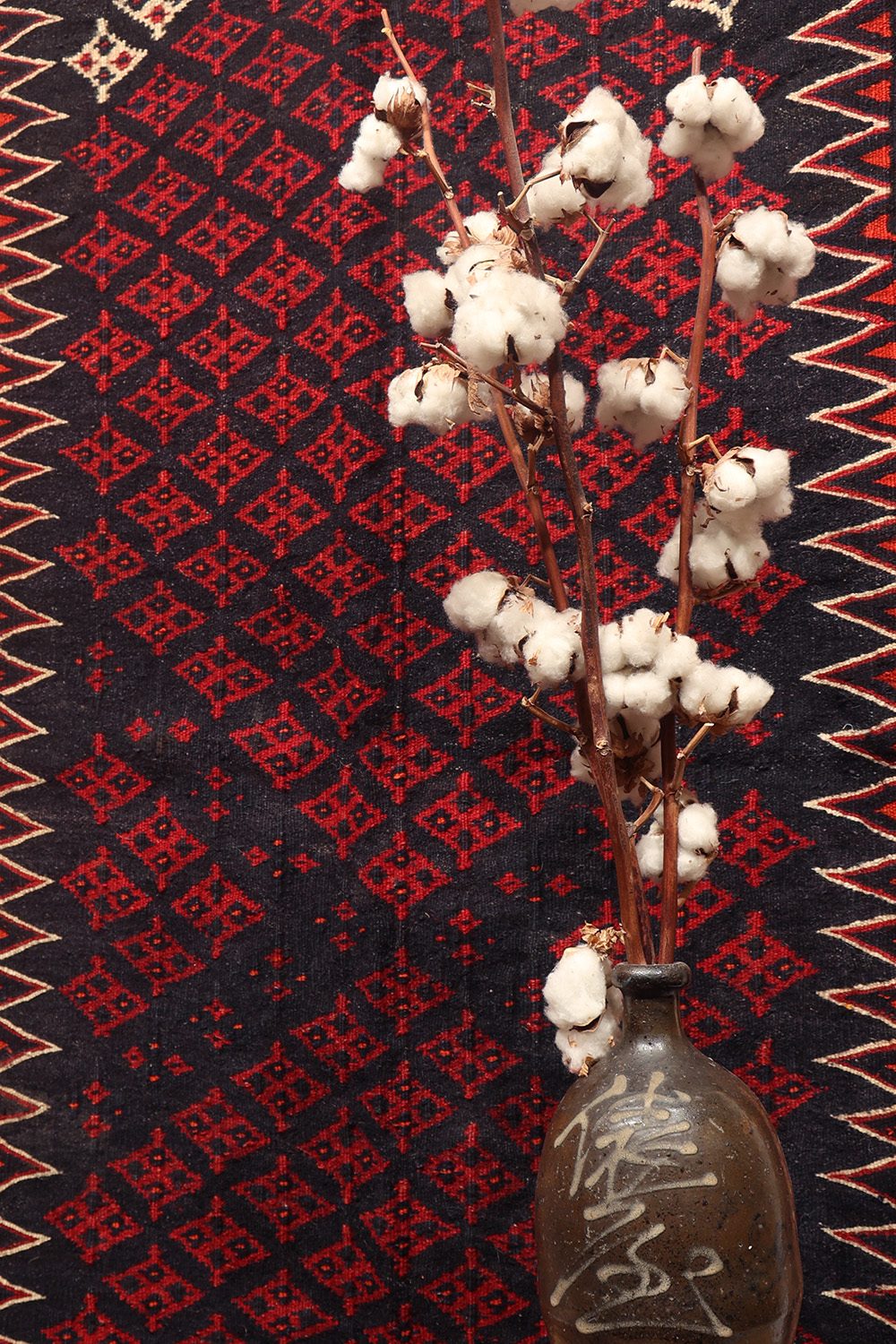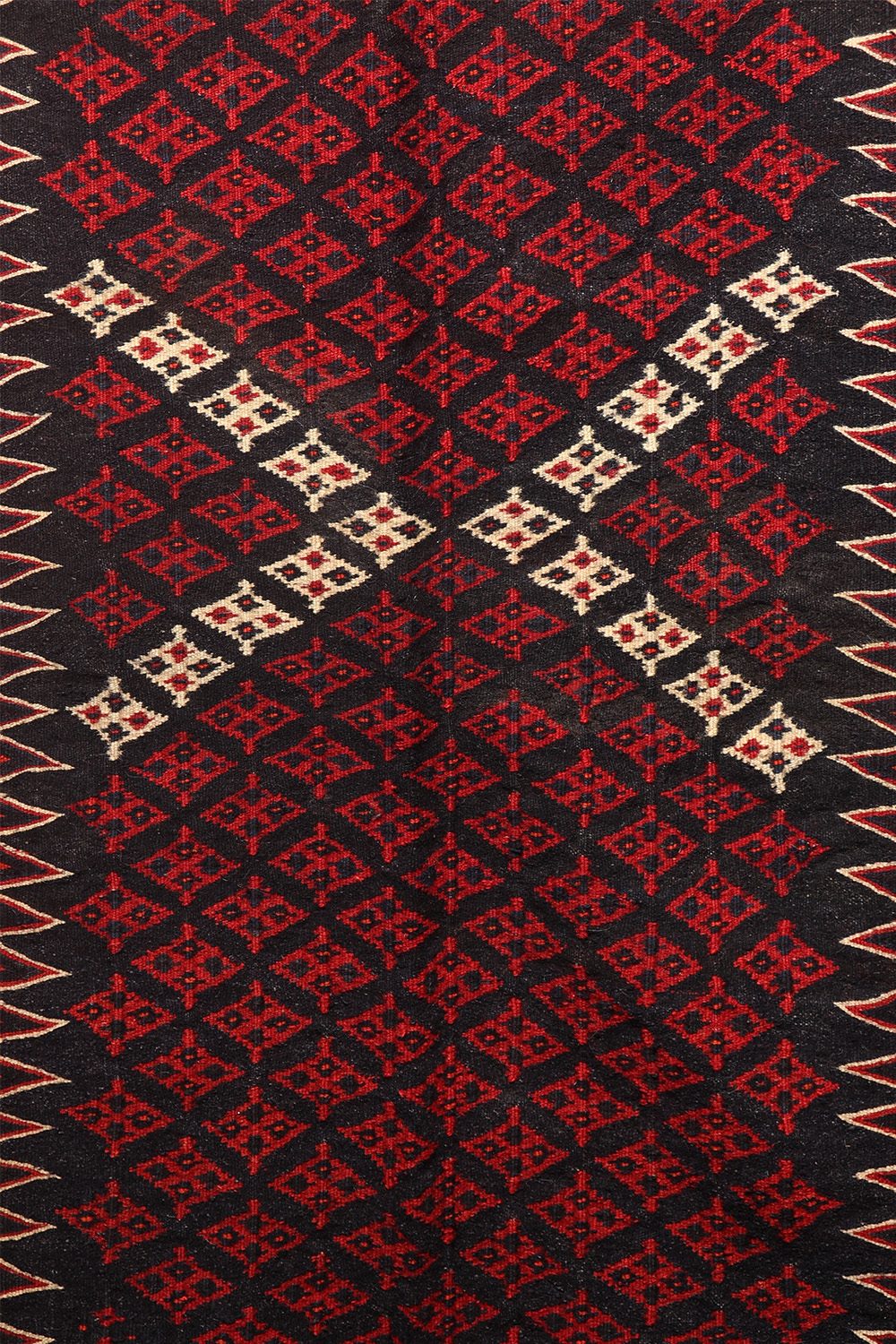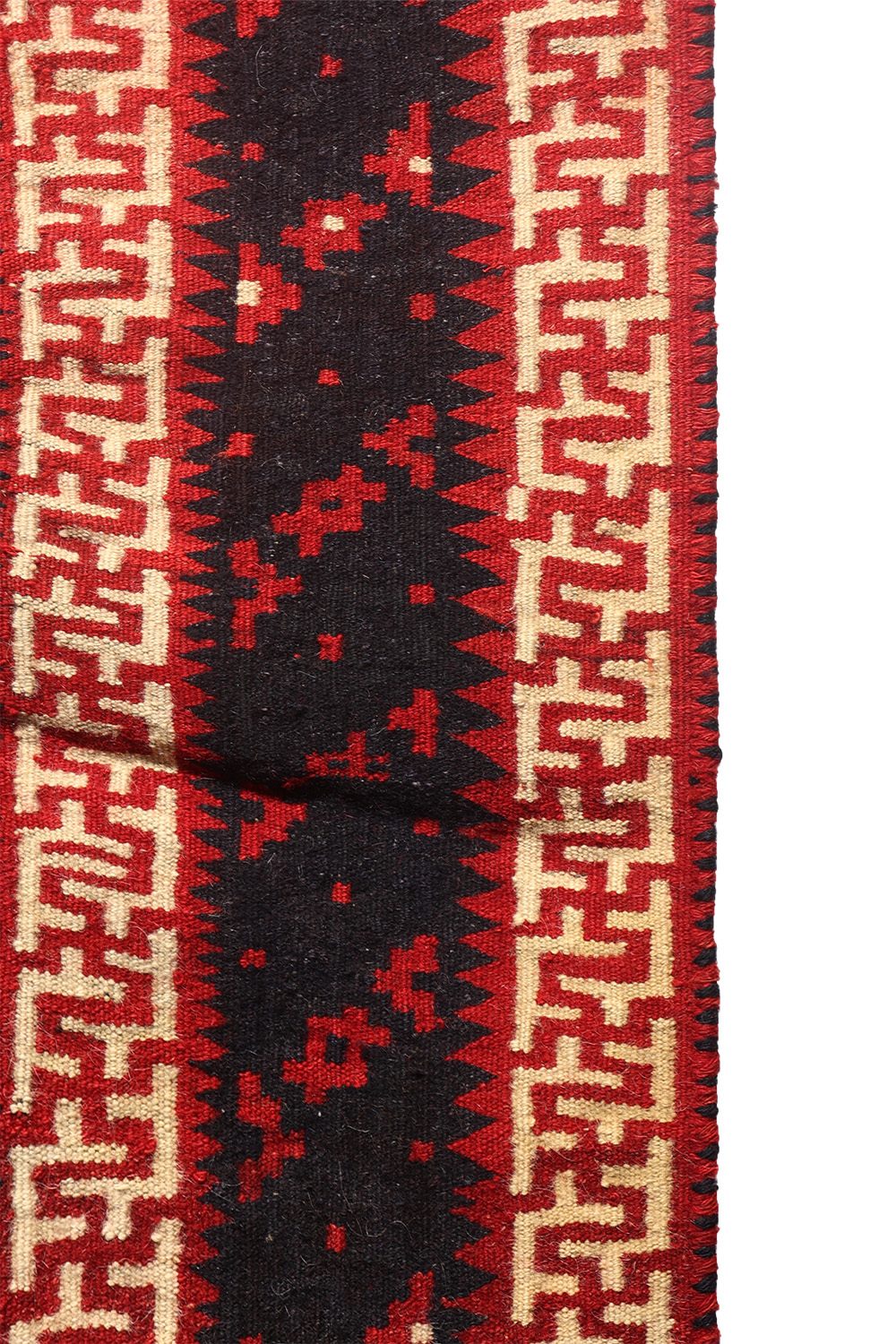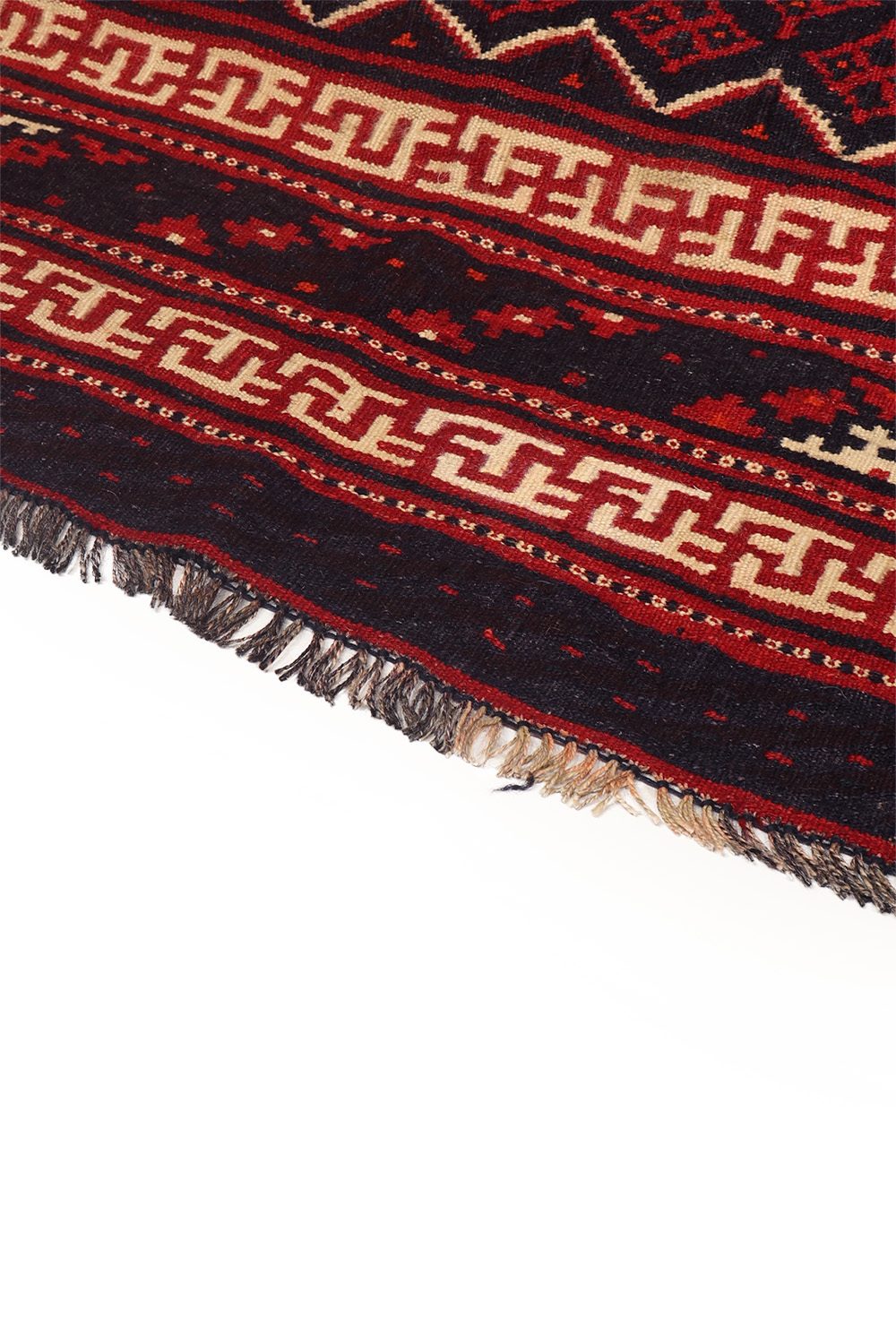This semi-antique kilim woven by a woman of the Bakhtiari ethnic group, is strong and robust, ideal for areas with high traffic and passage. The central field is made up of a multitude of diamonds that in turn create large diamonds that cover the entire surface of the central field.
Material: 100% hand-spun sheep wool
Size: 405×162 cms
Origin: Luri Bakhtiari tribe from Iran
Date of weaving: 1940s
Kilims or Gilims are flatwoven textiles with a woollen weft on a woollen, goat hair or cotton warp. There are many different techniques and designs. The weaver normally works within a tradition of techniques, motifs and designs specific to a particular area or ethnic group. The designs relate to her natural surroundings, protection, fertility and the harmony of family relationships. Each weaver adds something from her own creativity and sense of composition. Kilims are often woven as part of a marriage dowry and can be used to create many different objects like storage bags, horse-blankets, baby carriers, blankets and wall and floor coverings.
This vintage kilim was hand-woven on a simple loom by a village or nomadic weaver for her own use. Probably the weaver used wool from her own sheep. The wool was first cleaned, then hand-carded, hand-spun and finally dyed by hand, often using natural dye materials like roots, nuts, berries, fruits, flowers and plants. Kilims from the last quarter of the twentieth century mostly use synthetic dyes. This kilim would have taken many months to complete.
All our kilims selected in the country of origin and are professionally washed and restored before we import them directly from Iran, Turkey and Afghanistan. Natural patina and charming imperfections in design and colour (abrash) are highly valued characteristics of hand-woven kilims.
The Bakhtiari (also spelled Bakhtiyari; Persian: بختیاری) are a Lur tribe from Iran. They speak the Bakhtiari dialect of the Luri language.
Bakhtiaris primarily inhabit Chaharmahal and Bakhtiari and eastern Khuzestan, Lorestan, Bushehr, and Isfahan provinces.
A small percentage of Bakhtiari are still nomadic pastoralists, migrating between summer quarters and winter quarters. Numerical estimates of their total population vary widely.
Due to their luck of escaping danger throughout their history, they called themselves bakhtiyar (“fortunate”).
1 in stock
| Weight | 19 kg |
|---|
